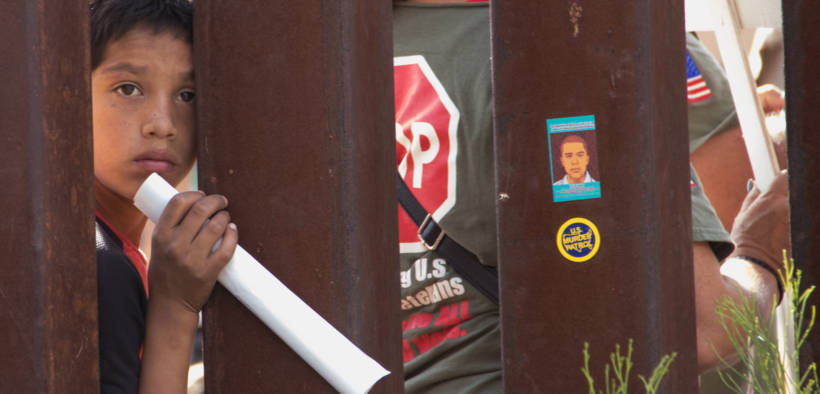New US Border Policies Would Send Asylum Seekers to Guatemala

Immigration advocates are concerned new asylum procedures at the U.S.-Mexico border are denying migrants their legal right to seek asylum in the U.S.
A plan to send Mexican nationals seeking asylum in the U.S. to Guatemala was put on hold last week, but it’s unknown for how long. The plan is one of a handful of new immigration policies at the U.S. border that has sparked concern from immigration activists that the Trump administration was “chipping away at the asylum process.”
In mid-2019, the U.S. government negotiated bilateral and multilateral Asylum Cooperative Agreements (ACAs) with Guatemala, El Salvador, and Honduras relating to providing protections for asylum seekers. Implementation started last November and by the end of the year, a few dozen people from El Salvador and Honduras who had been detained at the U.S. Mexico border had been sent to Guatemala and told to find protection there while they awaited the outcome of their asylum cases.
While Mexico was not part of the ACAs, on January 4 staff of the U.S. Citizenship and Immigration Services were notified via email that Mexican nationals would be included. Mexican and Guatemalan leaders objected to the plan, resulting in it being put on hold several days later.
Mexico and Guatemala Unhappy With Asylum Plan
On January 6, Mexico’s Foreign Ministry issued a statement “expressing its disagreement” with the plan and said it could “affect about 900 applicants.”
“The Government of Mexico, together with state and local authorities, will work to offer better options to Mexicans who may be affected by this provision. In addition, the Foreign Ministry will closely monitor compliance with the human rights set forth in the international agreements signed and ratified by both Mexico and the United States,” Mexico added.
Guatemala’s leadership also had reservations about expanding the plan to include Mexican asylum seekers. Per Buzzfeed news, the current president of Guatemala, Jimmy Morales, whose term ends this month said on January 8, “It is more than clear that within the agreement only Salvadorans and Hondurans were to be sent. The United States has talked about the possibility of discussing whether to include Mexican nationals, but that is something the incoming administration will have to discuss. It’s totally false that we had negotiated that Mexicans be sent here… Those are rumors.”
For now, Mexican asylum seekers are apparently being moved into another new program called the Humanitarian Asylum Review Process (HARP) which changes how quickly some asylum cases are processed and by whom. The American Civil Liberties Union filed a suit last month on behalf of Mexicans and Salvadorans in HARP on the grounds that it fast-tracks migrants through the asylum process and denies them adequate legal counsel.
“By forcing asylum seekers to proceed through the credible fear process while essentially incommunicado in CBP custody, without access to counsel, in conditions that otherwise significantly interfere with their ability to have a meaningful credible fear interview, and on a rushed timeline, PACR and HARP result in the erroneous removal of people who are at risk of persecution, torture, and death,” the ACLU filing says.
One immigration advocate, Efren Olivares, racial and economic justice program director for the nonprofit Texas Civil Rights Project, told Fox News the new asylum procedures were “outrageous” and have the “prosecutor acting as the judge.”
“It’s just another way to destroy the asylum process, the institution of asylum in the U.S.” Olivares said. “Little by little they are chipping away at the asylum process.”
Guatemala Not An Ideal Refuge
The U.S. Department of Justice says that the purpose of the ACA between the U.S., Guatemala, El Salvador, and Honduras is “to provide asylum seekers with access to only one of the ACA signatory countries’ protection systems.” However, Guatemala does not have the best track record for providing human rights protections, and while things have improved in recent years asylum seekers are unlikely to feel as safe there as they would in the U.S.
The U.S. State Department’s most recent human rights report on Guatemala from 2018 notes, “Human rights issues included reports of harsh and life-threatening prison conditions; widespread corruption; trafficking in persons; crimes involving violence or threats thereof targeting lesbian, gay, bisexual, transgender, and intersex (LGBTI) persons, persons with disabilities, and members of other minority groups; and use of forced or compulsory or child labor.”
The issues listed in the State Department’s report on human rights in Guatemala are, in fact, many of the same issues that asylum seekers are looking to escape when they come to the U.S.
US Version of Australia’s Pacific Solution
In some ways, the ACAs are similar to Australia’s so-called “Pacific Solution” where Australia pays small Pacific Island nations to house asylum seekers. Australia’s plan has been marred by controversy and resulted in a series of protests over inhumane conditions at the camps in November of 2018.
The Australian Government has faced backlash for the plan since it began in 2001, those who hoped to find asylum in Australia have instead been languishing in what Amnesty International called “open-air prison,” sometimes for years. The arrangement has also been likened to a “deal with the devil” by the former President of Nauru, one of the countries that house Australia’s asylum seekers.
The ACA, HARP, and other new immigration policies have only been in effect at the U.S. border for a couple of months so it remains to be seen what the long-term consequences will be if these policies become the status quo.
























